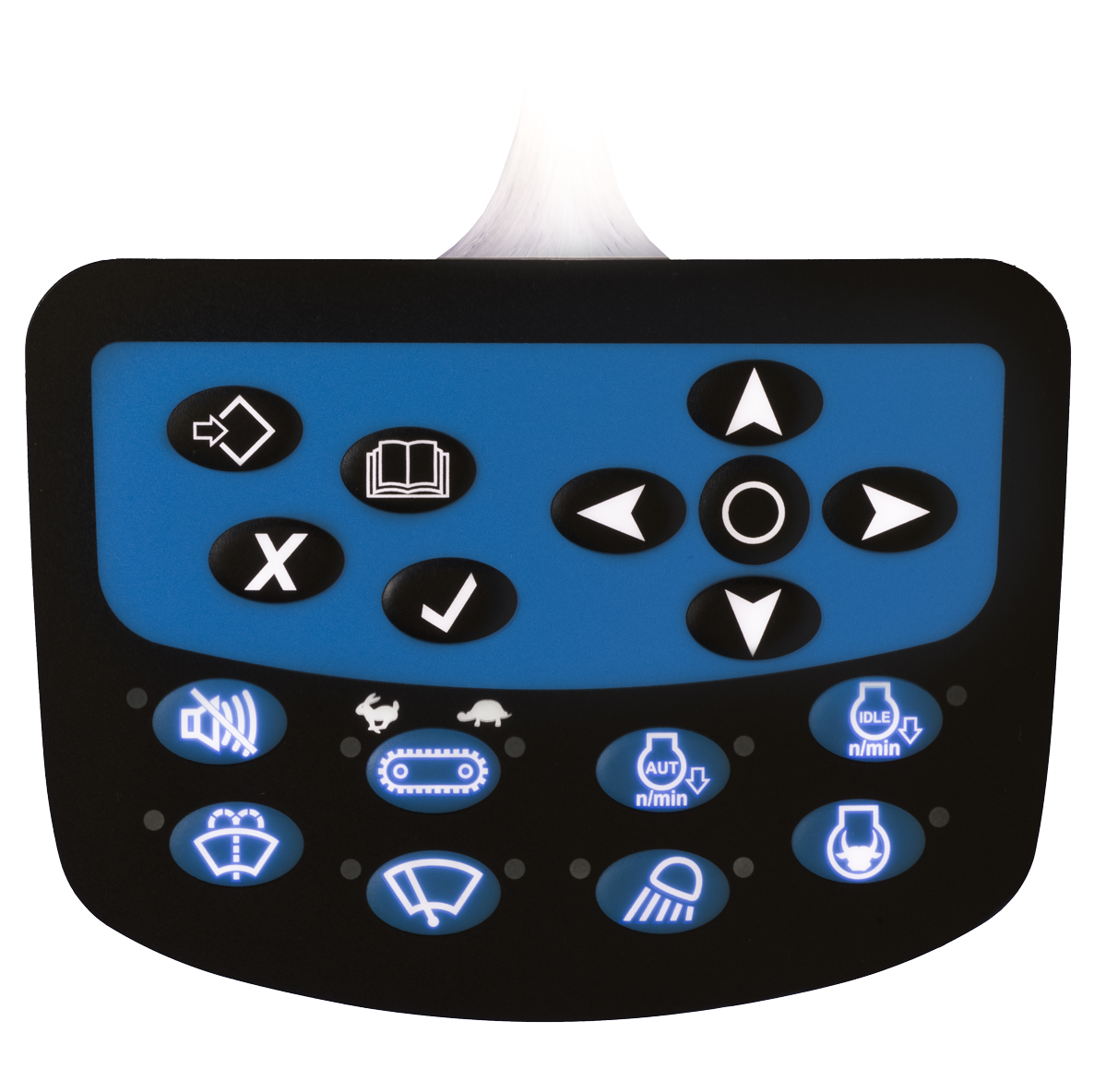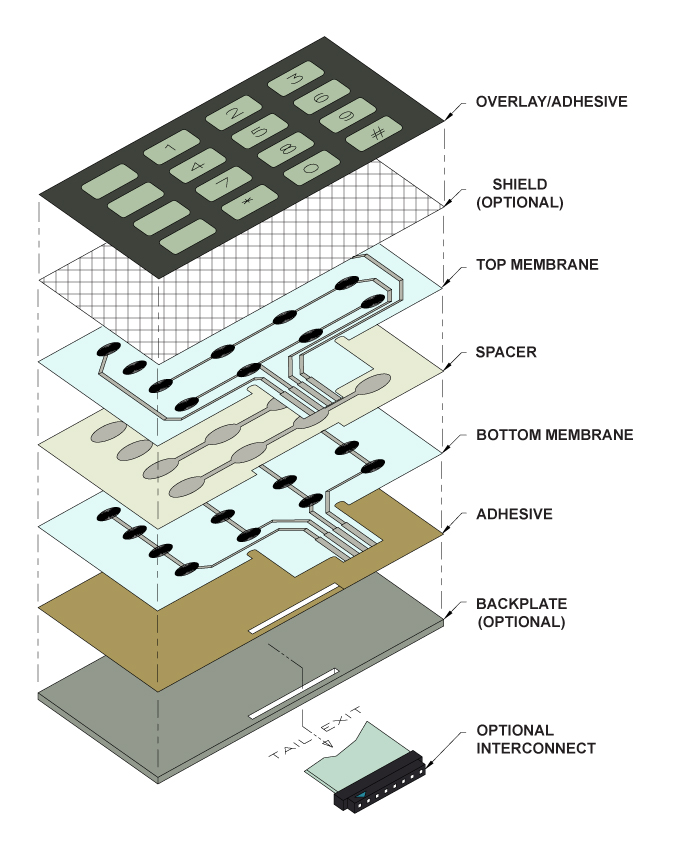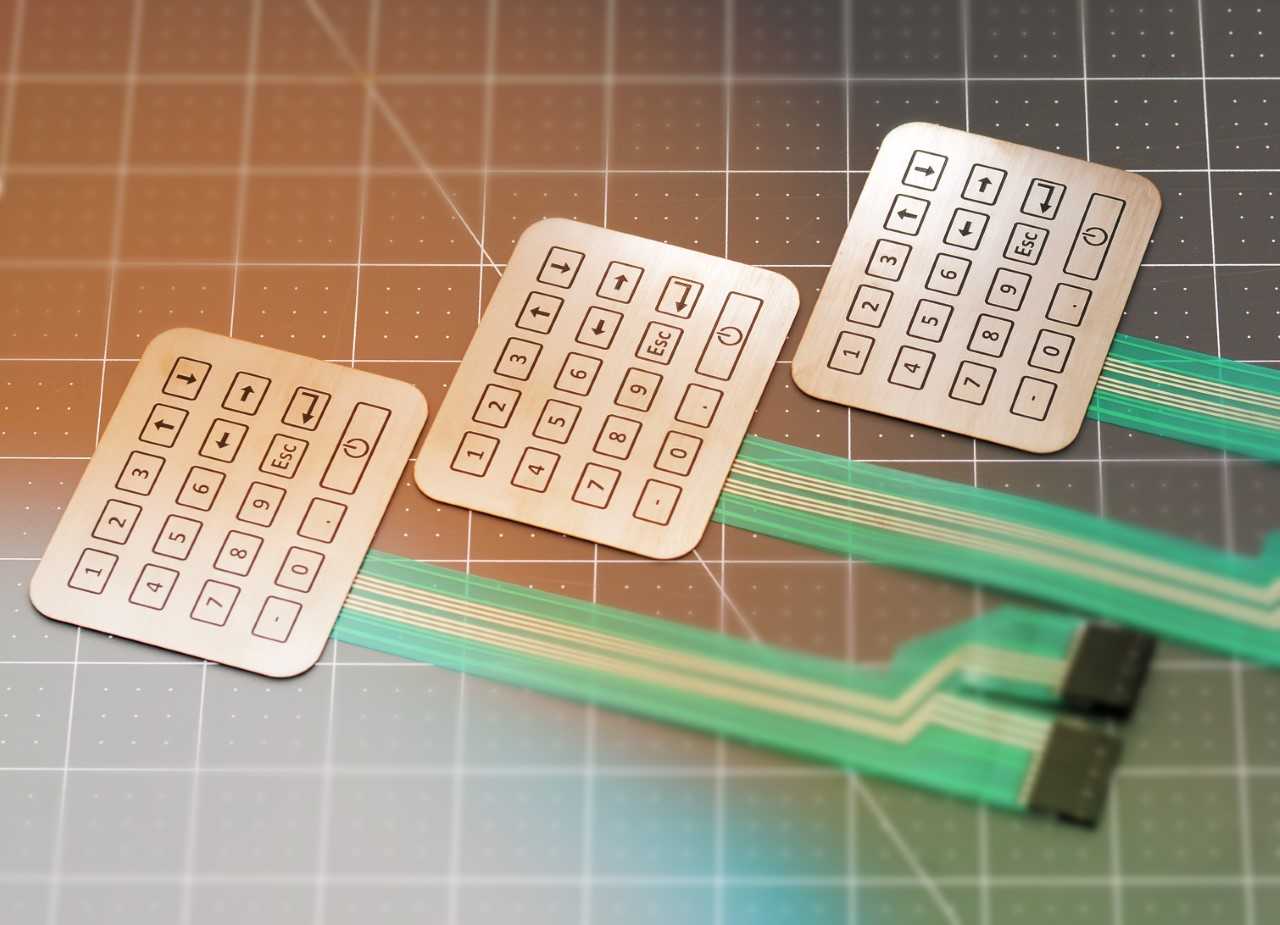Projects requiring high standards should always involve a capable membrane switch manufacturer from the start.
Projects requiring high standards should always involve a capable membrane switch manufacturer from the start.
Blog Article
Everything About Membrane Layer Switch: Recognizing Its Style and Performance
When you believe about the control user interfaces in modern tools, membrane buttons usually come to mind. Allow's explore what sets membrane switches over apart from other control systems.
What Are Membrane Layer Switches?

Membrane buttons can additionally be personalized regarding form, size, and graphics, enabling makers to develop special interfaces customized to particular products. Generally, membrane layer switches play a significant duty in boosting user experience across a vast variety of applications.
How Membrane Switches Work
When you push a secret on a membrane layer button, it turns on an uncomplicated yet effective device. membrane switch manufacturer. The top layer, often made of flexible material, presses down onto a conductive layer under it.
You'll see that the tactile responses varies based on the button layout, using either a soft click or a much more noticable feedback. As soon as you launch the secret, the membrane go back to its initial placement, reopening the circuit and stopping the signal. This procedure happens nearly instantaneously, making certain a responsive customer experience.
Membrane layer switches are popular due to their toughness and resistance to dust and dampness, making them ideal for various applications, from home appliances to medical tools. Comprehending this procedure helps you value their extensive use.
Secret Components of Membrane Switches
Understanding the vital parts of membrane layer buttons is fundamental for realizing their performance and style. The protective layer guards versus ecological factors and put on, expanding the switch's life-span. By understanding these components, you'll gain understanding into exactly how membrane changes run and their relevance in different applications.
Products Used in Membrane Layer Switch Over Style
The efficiency and longevity of membrane layer switches over heavily depend on the materials made use of in their layout. You normally experience polyester and polycarbonate as main substrates because of their excellent toughness and adaptability. These materials stand up to scrapes and chemicals, making them optimal for requiring atmospheres.
The conductive layers typically utilize silver or carbon, picked for their integrity and conductivity. membrane switch manufacturer. Silver offers superior efficiency, while carbon is a cost-efficient alternative. For the overlay, you might consider a matte or shiny coating, depending on your aesthetic demands and customer experience
Make particular to select adhesives that endure ecological aspects like temperature and moisture. Selecting the right materials will guarantee your membrane switch stands the examination of time.
Design Considerations for Membrane Buttons
While developing membrane switches, it's vital to take into account different factors that influence their performance and user experience. Begin by check my reference focusing on the format and switch dimension; make specific they're user-friendly and very easy to browse.
Validate your layout fits environmental aspects, like dampness or temperature level variants, which could impact efficiency. By thoroughly thinking about these aspects, you'll produce a membrane button that boosts usability and satisfaction.
Applications of Membrane Layer Buttons
Membrane buttons are flexible elements found in different applications, from industrial tools to customer electronics. You'll see their influence in machines that call for sturdy interfaces and in devices that benefit from sleek designs. Recognizing these applications assists you appreciate the performance and practicality of membrane buttons in everyday innovation.
Industrial Equipment Usage
When you're looking to enhance the functionality of commercial tools, membrane layer buttons offer a trusted solution that integrates toughness with straightforward design. These buttons are best for harsh atmospheres, providing resistance to dirt, wetness, and chemicals. Welcome membrane layer buttons to simplify your operations and improve overall performance.
Consumer Electronic Devices Integration
In the domain of consumer electronics, membrane buttons play an important role in enhancing customer interaction and tool performance. Membrane layer switches also ensure resilience and resistance to dirt and wetness, prolonging the life-span of your electronics. By picking membrane switches, you boost not simply the functionality but additionally the style of your devices, making everyday interactions smooth and delightful.
Advantages and Negative Aspects of Membrane Switches
While membrane buttons use a range of advantages, they also come with some disadvantages that you must consider. One considerable benefit is their portable design, making them ideal for space-constrained applications.

Nevertheless, there are drawbacks. Membrane buttons can have a shorter life-span contrasted to mechanical buttons, particularly under heavy usage. They can additionally be much less tactile, which might influence customer feedback during operation. Moreover, here if harmed, fixing them can be difficult and usually requires complete replacement. Eventually, their level of sensitivity to extreme temperature levels and environmental conditions might limit their effectiveness in certain setups. Balancing these advantages and disadvantages will certainly help you identify if membrane layer buttons are the best suitable for your job.
Often Asked Questions
The Length Of Time Do Membrane Layer Changes Generally Last?
Membrane switches over typically last between 5 to 10 years, depending upon use and environmental conditions. You'll intend to evaluate elements like wear, direct exposure to moisture, and temperature here level variations to determine their long life successfully.
Can Membrane Layer Switches Over Be Customized for Certain Styles?
Yes, you can tailor membrane layer buttons to fit certain layouts (membrane switch manufacturer). You'll have the liberty to select shades, forms, and designs that match your project's needs, ensuring they mix seamlessly with your general aesthetic
What Is the Expense Array for Membrane Change Production?
The cost variety for membrane layer button production usually falls in between $1 and $10 per system, relying on factors like layout complexity, quantity, and materials. You can get quotes from producers to discover the very best choice.

Are Membrane Switches Water Resistant or Immune?
Membrane switches can be designed to be water resistant or immune, relying on materials made use of and construction techniques. If you need them for wet atmospheres, ensure you specify those demands throughout the layout process.
Just How Do Membrane Layer Switches Compare to Standard Buttons?
Membrane layer buttons are generally thinner and more flexible than typical buttons, providing a streamlined style. They're often easier to cleanse and incorporate, yet may not offer the tactile feedback you're used to with mechanical alternatives.
Verdict

Report this page